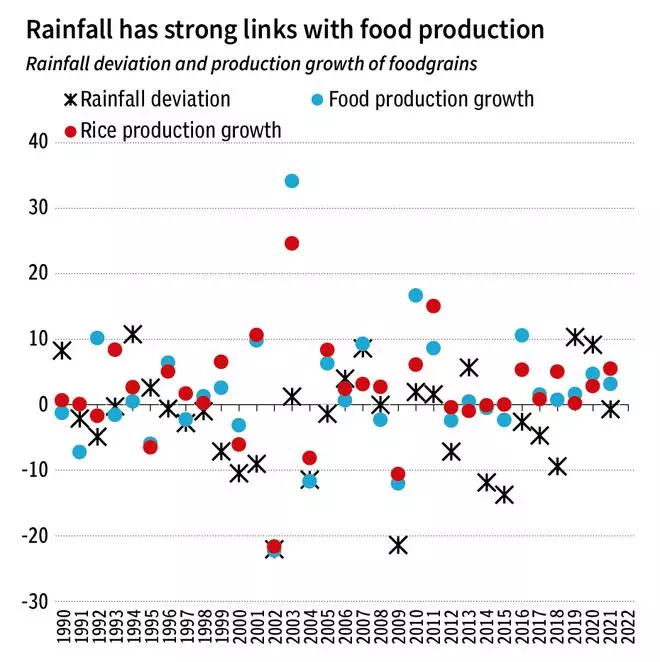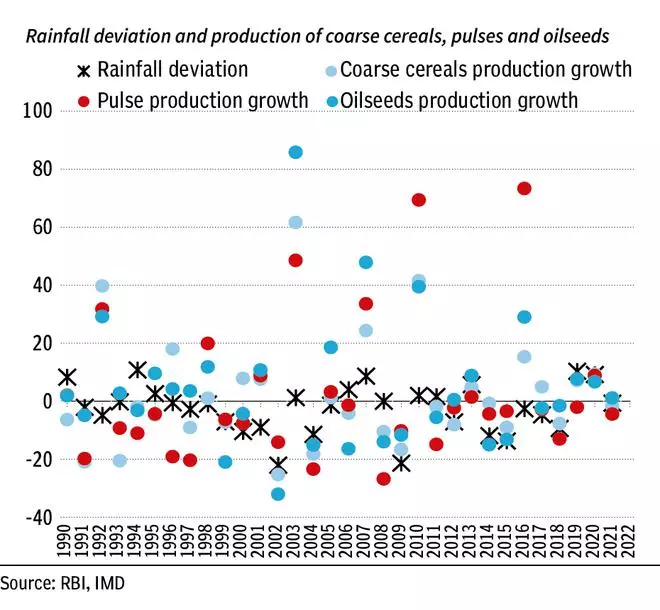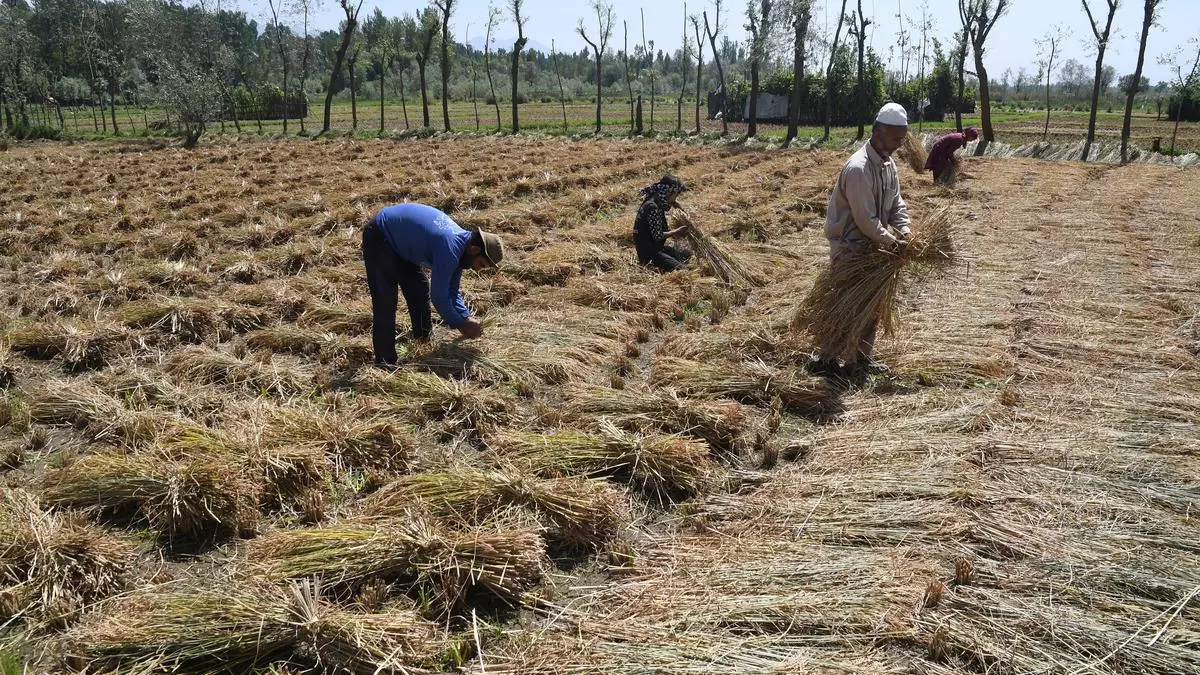Why monsoon-dependent foodgrain production is cause for concern?
Notwithstanding the country’s remarkable surge in the production levels of foodgrains, dependence on the Southwest monsoon (SWM) is a cause for concern. Data show decreasing trends in SWM in some States, while 40 per cent of the net sown area is expected to remain rainfed even after the attainment of the full irrigation potential of the country. The Department of Agriculture’s annual report for 2022-23 highlights that foodgrain production in the country accrues from approximately 139.18 million hectares of net area sown. Of this, 69.48 million hectares is net irrigated, and the remaining area of about 69.70 million hectares is under rainfed conditions (according to Land Use Statistics at a Glance 2017-18).
“Rainfed agriculture is complex, diverse and risk-prone, characterised by low levels of productivity and low input usage. Rainfed areas, if managed properly, have the potential to contribute a larger share in the overall production of food grains in the country,” the report mentions.
Monsoon deficiency
The recent RBI bulletin titled ‘Agriculture’s Dependency on Monsoon Rainfall in India’ mentions that SWM remains important for Kharif as well as rabi foodgrains. The paper indicates that while the impact of SWM rainfall is statistically significant, it has come down in the recent period. “Furthermore, the impact is found relatively less pronounced in periods with more irrigation vis-à- vis less irrigation, indicating irrigation mitigates the adverse consequences of monsoon deficiency on agricultural production,” the paper added.


According to the paper’s findings, enhancing irrigation infrastructure significantly improves crop production’s resilience to the adverse impact of SWM rainfall variations. The paper suggests that increased public investment in irrigation can further fortify domestic agricultural production against the uncertainties of the monsoon season.
Interestingly, according to the data for 2018-19 provided by the Directorate of Economics and Statistics, Ministry of Agriculture and Farmers Welfare, the percentage of the net unirrigated area over net area sown in the country is estimated to be about 48.65 per cent. It is estimated that 40 per cent of the net sown area is expected to remain rainfed even after the attainment of the full irrigation potential of the country. This factor is vital, considering the decline in rainfall in some states.
Decline in SWM
The India Meteorological Department (IMD) recently conducted an analysis of observed monsoon rainfall variability and changes in 29 States and Union Territories at the State and district levels, based on the IMD’s observational data of recent 30 years (1989- 2018) during the SWM season between June and September.
The analysis concluded that five States — Uttar Pradesh, Bihar, West Bengal, Meghalaya and Nagaland — have shown significant decreasing trends in SWM rainfall during the recent 30-year period (1989-2018). The annual rainfall over these five States, along with the States of Arunachal Pradesh and Himachal Pradesh, also shows significant decreasing trends.
